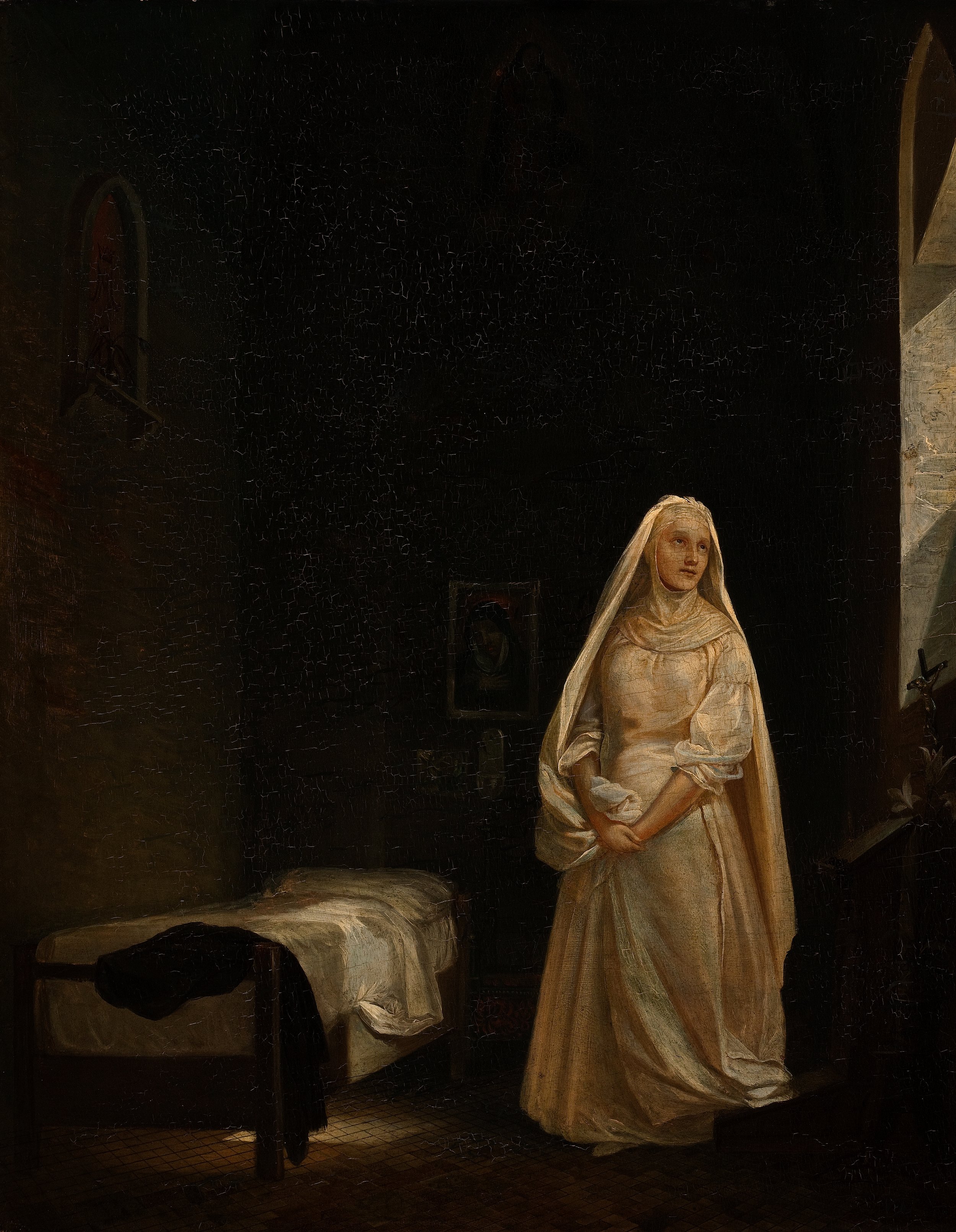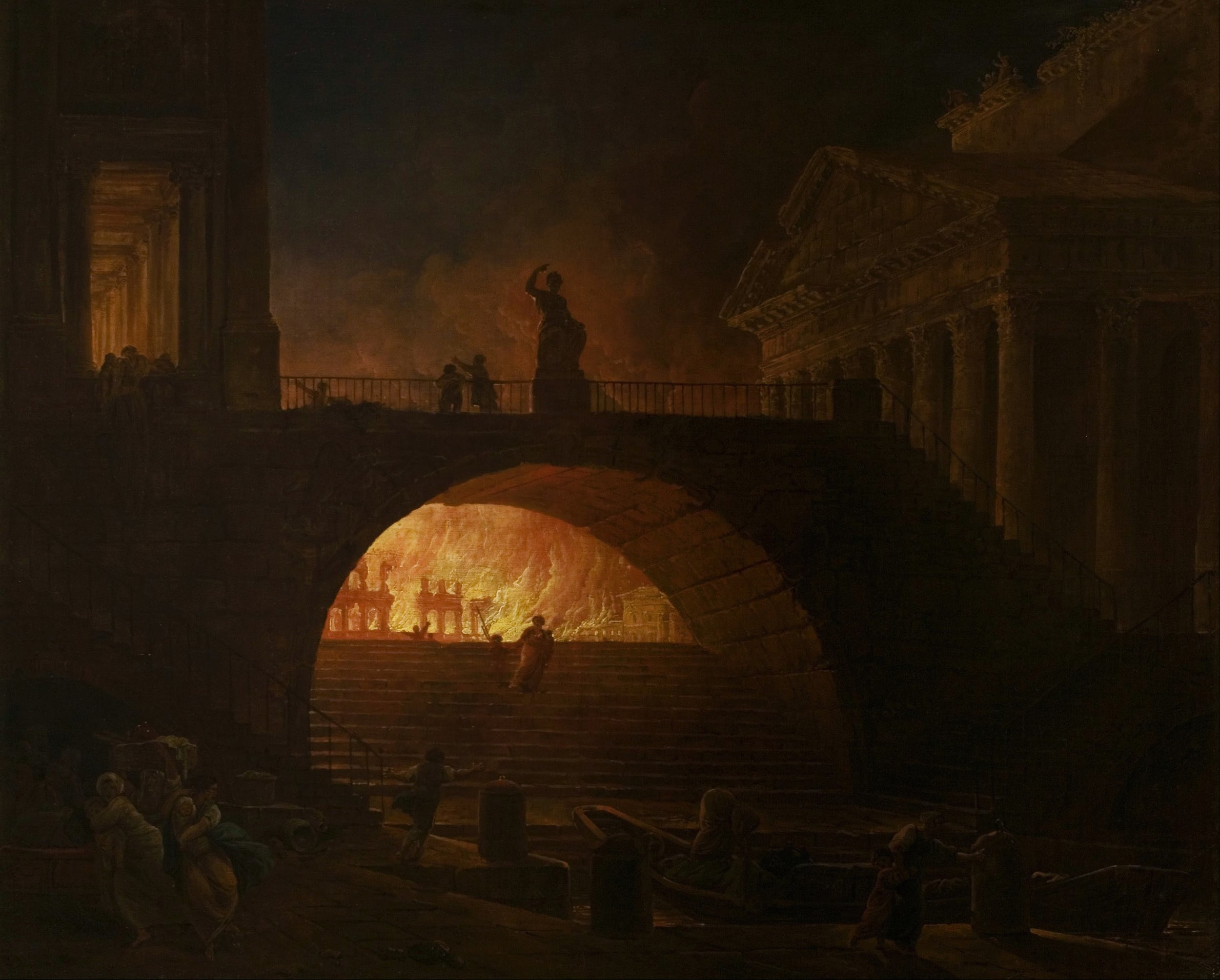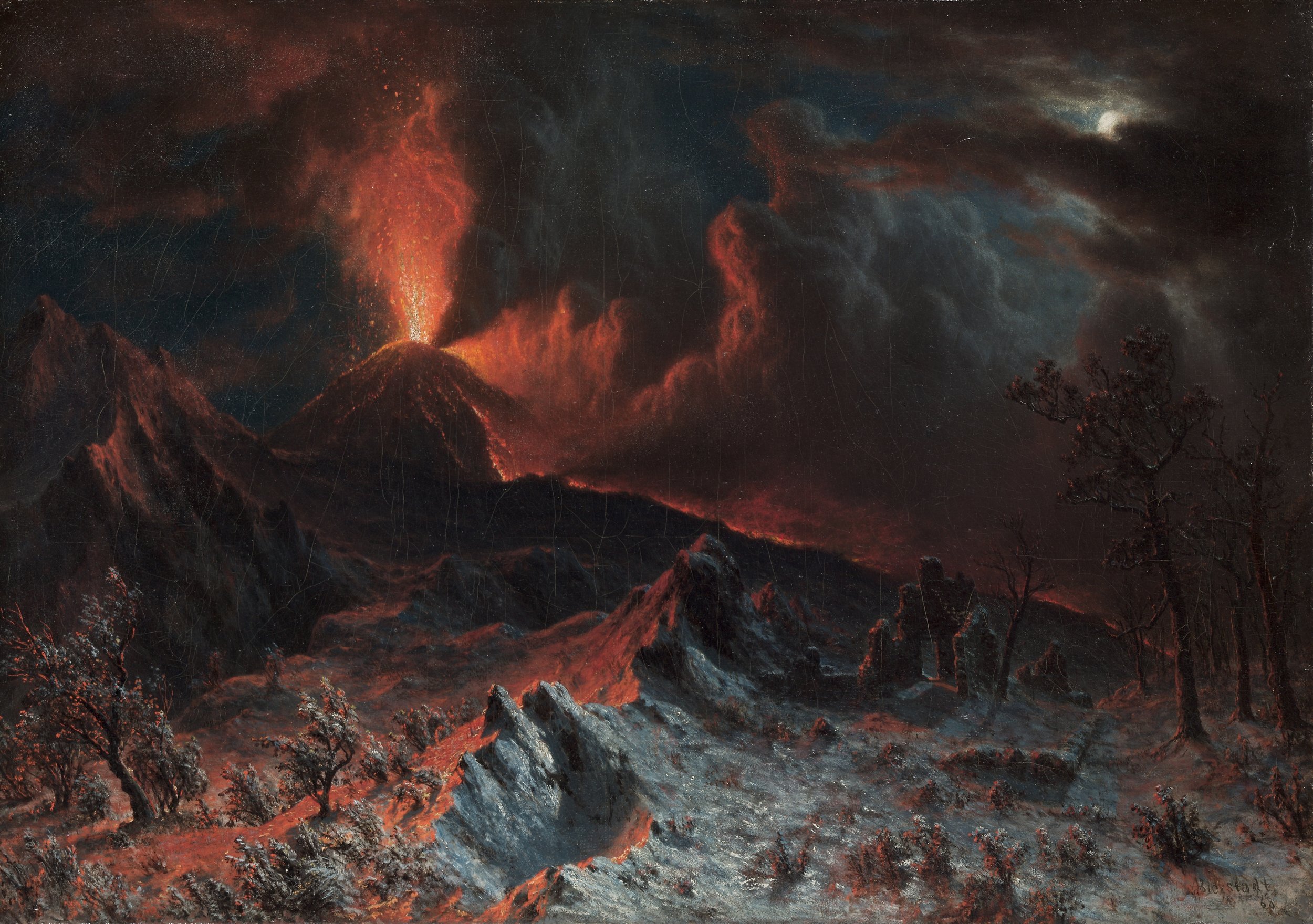The Stained Glass of Our Lives

The Stained Glass of Our Lives
Amelia Buzzard
On Building the Cathedral of Everyday Intimacy
The cathedral of the cosmos is too vast for us to comprehend—but would you believe me if I told you we are standing in it now? This cathedral is as expansive as God’s love. Our diminutive size prevents us from seeing the cathedral’s walls or windows. Yet within this vast expanse are smaller chapels tended by human custodians whose words, inspired by the Holy Spirit, point beyond themselves. These corners of the cathedral portray more than God’s transforming work in a single soul; together, they combine to reveal God’s hand at work from the beginning to the end.
Here stands Moses, his beard flowing, who witnessed God forming a nation’s ethical identity, inscribing it in Hebrew as codes of law. His window is adorned with hieroglyphics, snakes, desert winds, and fire. His chapel is a leather tent. Nearby is King David, his arms bearing battle scars. He perceived God’s hand in his own life and penned it as poetry. His window depicts warfare and jubilant dancing in the streets. His chapel is an open field. And here stands John, gaunt from his time in exile, glimpsing the end of this world in a vision called apokálypsis. His chapel is an empty tomb scented with nard.
Each window in Scripture introduces us to God’s glory through different eyes, shaped by individual professions, cultures, and places. This is the lesser task of every Christian. None of us can fully contain God’s truth, but each of us possesses a portion. Let us try to share them with one another.
*
This spring, I visited the Met Cloisters for the first time. As I wandered through the displays of medieval art, I had a realization: Each element contained within the many paintings and mosaics inside this supposed temple of humanism, from the color of Christ’s robe to the shape of his hand, actually embodied a particular aspect of Christian truth. Collectively, they formed a systematic theology that, instead of being confined within the binding of a book, occupied physical space.
In the medieval church, literacy was a luxury, limited to monastery and palace. Because of this, laity learned and worshiped through art. This innovation of retelling the gospel through visual art is often called “the poor man’s Bible.”
While everyone can read in modern-day America, in an increasingly secular society, many people don’t know the meaning of simple Christian terms: Repentance, holiness, and even sin sound like jargon to the passerby on the street. Without general biblical literacy, throwing a tract or a Gideon Bible at a stranger offers as much help as handing out Vulgates to illiterate peasants. A peasant could learn to read, and an unchurched man could puzzle his way through ancient Judaism and Roman culture. But it would be much easier if they could meet Christ without enduring a course of study.
Whether struggling to understand the original text in modern or ancient times, our daily lives can continually illustrate the gospel story. In Traveling Mercies: Some Thoughts on Faith, Anne Lamott recounts how a weekly trip to a California flea market led her, after twists and turns, to Jesus. Anne would pause to listen to the singing coming from the nearby church, and “something inside me that was stiff and rotting would feel soft and tender.” The unremarkable sight of a bedraggled nobody pausing on the street across from the church hid a miracle. Anne was experiencing the beginning of a transformation no one could see until she testified about her experience. When the lights turned on and the stained glass shone, she saw that the bedraggled nobody was actually the lost daughter of a King. Without any words, she witnessed the story of the prodigal son.
*
It is night in my own cathedral, a new moon night with no stars visible through the thick cover of clouds. A storm has torn down the power lines, enveloping the town in darkness. But around 6 a.m., the clouds begin to move in a mass across the sky. A yellow line of light appears on the horizon. Inside the cathedral, the eastern wall becomes a blur of brightness. The seeker, alone at the altar, looks up. As her darkened eyes adjust to the light, she sees that she is surrounded by rows of towering stained glass. The sun rises, and slowly, the figures inside the windows come alive.
It is day in the cathedral now; brightness streams from the windows and floods the stone floors with limpid pools of blue and green and red. The seeker worships with abandon, her faith thickened as she watches the sunlight turn her every step into a kaleidoscope of color. But when she ventures out from the doors of the cathedral to see what it looks like outside, she is disappointed to find herself once again in a land of shadow.
While the moon and stars remain hidden, the windows of her cathedral, still bright, cast the only light in her immediate surroundings. But in the distance, she observes flickers of light among the forests and hills. There are other cathedrals too in this land, other worshipers lighting the way for one another in the night.
Beyond its walls, the cathedral’s windows appear illuminated from within. Nocturnal wanderers may mistake this light for a generator’s glow, but the power lines are down, and the worshipers have no electricity. They live within the day, and it gives light from both inside and out. If you are willing to enter with me, I will show you what the windows look like from within. They are more beautiful than you can imagine.
I visit my cathedral often, but the artist is always adding to the stained glass, and I never know what I might find. As we stand in the center of the nave, the corner of a window catches my eye.
In the picture, a girl sits upright in the pew of a church, wearing a pink paisley cotton dress, knee-length, with a high neckline and orderly pleats. The next pane shows the same girl lying in a grassy field at night. And in the final pane, she sits beneath a bunk bed reading. These pictures hardly seem worth preserving, so ordinary. But as a sunbeam proceeds slowly over the panes, the little figures begin to stir. We watch in silence as they slowly come to life.
In the first picture, the girl in the paisley dress fidgets, and I realize she’s not listening to the sermon. Over her shoulder, I see she has doodled with a pen on the church bulletin—dragons, stars, the profile of a face. While she knows in her head that she’s a sinner, she really believes she’s better than most people and that maybe the sermon isn’t so important—she is dutiful, kind, pious without being a prig; all-in-all, she thinks of herself as good company.
When the sun lights up the second picture, I realize the girl in the field is weeping. The crabgrass she lies in is wet and poking into her skin. Peering into the dark, I realize she is surrounded by granite tombstones. Half of her wants to die, and half of her hopes that if she is dramatic enough, her boyfriend will listen to what she has to say. The next morning, she is back in the pews, hair brushed, face scrubbed, dutifully chanting a creed.
In the third picture, the girl fumbles in a closet, trying to find the right jacket to wear to a party. Then, she lowers her arm and looks intently at the wall like she’s listening to a voice she can barely hear. Something in her shoulders releases like a coiled spring. Her face shines. God has just spoken to her, commanding her to be free of an emotional addiction she has struggled with for months. Like Jesus’ order to the lame man—“Get up, take up your bed, and walk”—initially, the command seems harsh. Walking was impossible for the lame, and after trying many times to end her unhealthy relationship, the girl has come to believe she too is doomed to stay as she is. But just as God told creation to emerge from nothing, just as he told crooked bones to straighten, in the dark corner of her room, he tells her to break the ties that bind her, and she finds that, suddenly, she can.
In the final picture, I see the girl has turned her bed into a fort, draped it with blankets on all sides. It is as cozy as a womb. Her desk lamp creates a halo of light around the Lutherbibel open on her lap. She is whispering one verse of Psalm 23 again and again. She closes her eyes. “Du bist bei mir. Du bist bei mir. Du bist bei mir,” she says. “You are with me. I believe it now. I know it now. You, you, my Father, my love. Even in the valley of the shadow of death, you are with me.”
The story leaves off here. It’s a subtle narrative, one of a girl changed from a pharisee to Mary Magdalene. How often does the gospel replay in different times and places, concealed within the clothing of the commonplace?
*
Stained-glass windows reveal their full beauty only when one stands within the walls of the cathedral. Although our testimonies shine like lit windows to a dark world, their work is not primarily outward-focused. Within these walls, the broken soul finds healing, and every so often, God takes one of the most jagged bits of glass and welds it into a window, sealing a storyline. Before we can publicly glorify God for his provision, we must first see it. This requires setting aside time to enter our own souls and wait for God’s creative touch, making everything beautiful in its time.
If we try to testify without first cultivating this habit of prayerful worship, our efforts may cause more harm than good. As cathedral custodian and keeper of the keys, the Christian may choose to keep her spiritual life’s doors locked, the lights off, and the windows dusty. She may even stand before the cathedral all day giving speeches. No longer does she enter the building to mop the floors and repair leaks in the ceiling. She ceases to notice the new windows. She ignores the artist when he passes in the hall. Instead, she spends her work hours telling everyone about the beauty of a window she saw once, long ago. Meanwhile, the cathedral itself, untended and abandoned, falls into disrepair.
In his essay “Deep Calls to Deep,” Chinese pastor and martyr Watchman Nee writes, “Anything that is not from the depths will never reach the depths of others.” By depths, Nee is referring to a rooted spiritual life. When we maintain our communion with God, our testimonies, even if they are halting and in simple language, will reach the spiritual depths of others. But if we allow ourselves to be distracted from this practice, whatever we say will be swept away in a roar of worldly noise.
*
The longest one-on-one conversation recorded in the Gospels occurs between Jesus and a Samaritan woman. Her idea of the Scriptures lacked a true Messianic understanding, and her lifestyle was openly promiscuous. But despite the holes in both her theology and her reputation, the woman did not hesitate to tell her neighbors about the man at the well. She ran into her village and proclaimed, “He told me everything I ever did!” Because of this simple testimony, many believed.
Every saint is capable of opening the doors of one of God’s cathedrals to point someone from the narthex toward the nave—Jewish fisherman or Samaritan pariah, college student or car mechanic. The power of our testimonies comes not from the advantages of our stations, our knowledge, or our piety, but from our love for the Creator.
How can we refuse his call? Like Moses, we say, “I am slow of speech.” Like Abraham, we protest we’re much too old. Like Isaiah, we cry, “Woe is me, for I am ruined, for I am a man of unclean lips.” Knowing our own frailty, we ask God to please just work alone, like the other gods proclaimed throughout the world, by pure authority and power. But that is not our God.
He knows that in our unclean state, we are unable to stand in his presence. But he is willing to do anything to make it so we can. God came down to live with us. He died in our place, by our own murderous hands. Then, he conquered death and sealed our lives to his with holy fire. In all of this, he has demonstrated in the clearest possible terms that he wants us. He wants us so much that he gave up everything that made him God, so that we could have it too.
*
Human lives through the human pen: This is how God chose to reveal his glory, ranking the deepening of relationship with his sons and daughters above efficiency. He sacrificed everything to bring us into his presence, and now, he wants to hear us speak.
That can be our clarion call. Wander into the cathedral of your soul. Stare up at the arches crafted to make marble’s heaviness seem as light as the curve in an eagle’s wing. Once, your soul was dark and empty; now, glowing figures play through its chambers, each an image of God, casting beams upon the floors in fractals that wander over pillars and pews with the sun’s passage. Wake and see the beauty that God has wrought through the story of your life. Then, when you have taken your fill of faith and joy, go out and share it with those who have yet to see the warm sunlight streaming through the stained glass.
Amelia Buzzard
Writer & Mother
Amelia is a writer, Gen-Z commentator & mother in Upstate New York.
Painting by Saturnin Swierzynski




